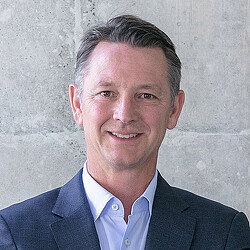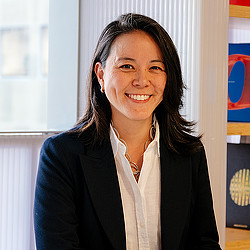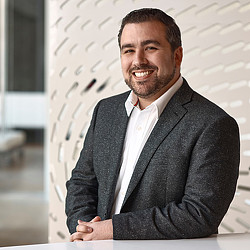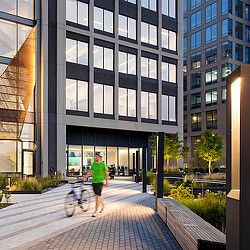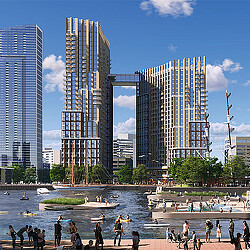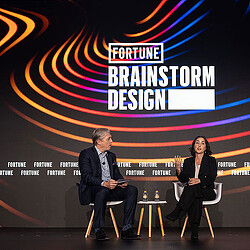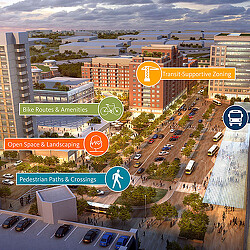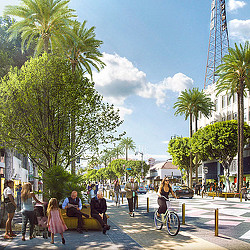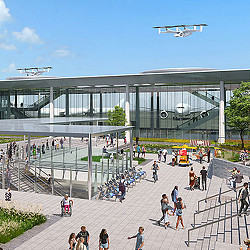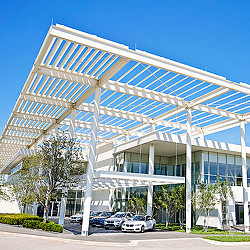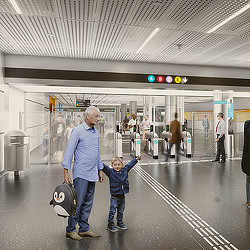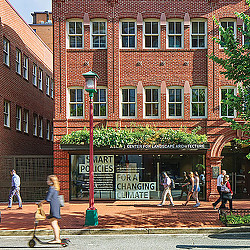Trends to Watch Shaping the Future of Mobility and Transportation
Gensler’s mobility and transportation leaders discuss the biggest trends shaping the industry, from micromobility to electrification.
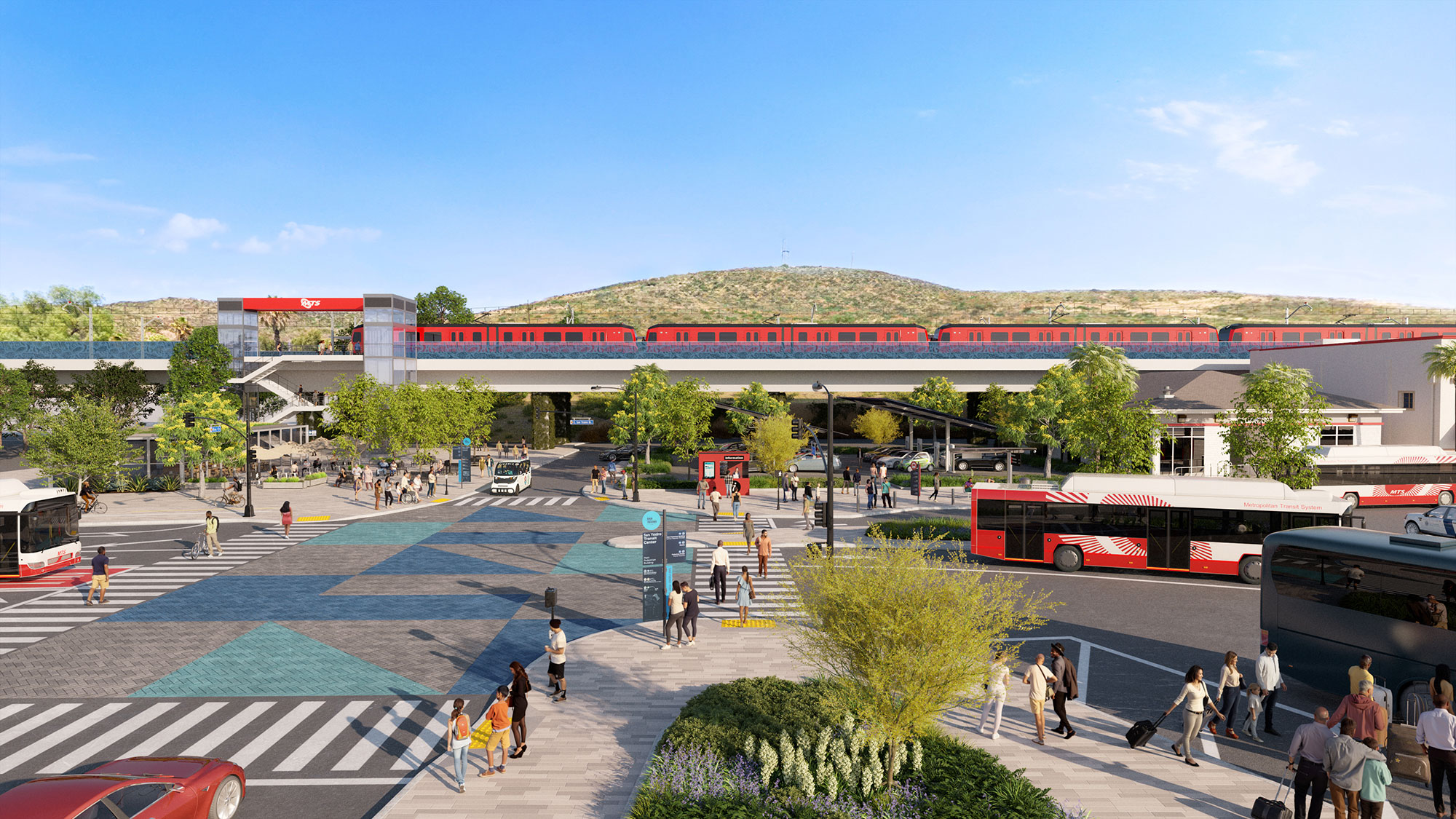
Editor’s Note: This blog is part of our Design Forecast blog series, looking at what’s next in 2025 and beyond.
The mobility and transportation industry is navigating significant challenges and opportunities, ranging from safety and reliability to EV charging stations, high-speed rail, and micromobility. In response, cities and transit agencies are rethinking station designs and infrastructure to enhance the user experience.
Here, we sit down with Dylan Jones and Carmen Cham, global leaders for Gensler’s Mobility & Transportation practice; Jaymes Dunsmore, Gensler Mobility Lab leader; and Alex Burkholder, Gensler Mobility Lab leader in Puget Sound, to discuss what’s next for the future of mobility and transportation.The synergies between mobility, housing, and energy have never been so important to understand. What do clients need to know?
Dylan Jones: The ability to co-locate good housing around transit investments and infrastructure is really important in the growth of our cities. Transit agencies are working with public agencies or planning authorities to implement a vision of the development of housing around transit. At the same time, private sector clients are looking for public sector supported projects, which usually come with favorable loan or lending opportunities. We can provide a bridge between private sector development and public sector infrastructure investments.
Carmen Cham: Metros and transit agencies are dipping their toes into developer and public-private partnership (P3) models for building development or station areas around their existing systems. And the energy infrastructure is not there yet to support all the new EV charging development happening at these centers.
Jaymes Dunsmore: Prioritizing development around transit stations has the potential to add much-needed housing and increase transit ridership, while reducing greenhouse gas emissions by creating walkable communities that reduce the need to drive. We developed the TOD Opportunity Index to help cities and transit agencies and developers identify the development potential around stations.
Alex Burkholder: In many cities, people are being pushed out of urban cores because of a lack of affordable housing, which is contributing to the decline of downtowns. In the Puget Sound, developers are partnering with Sound Transit to build housing around transit stations, but the expansion of the transit system is also bringing the ability for people to find affordably priced housing and still get into the city. Together, these two things will help revitalize our cities.
What are some design solutions to lead the next generation of city building?
Alex: There’s a flight to quality with commercial real estate, and the buildings that are getting occupied are the ones where owners and landlords are investing in amenities and creating experiences. Similarly, the transit systems that are going to work are well lit, get people excited, and go directly to stadiums, retail districts, or cultural areas. It’s important for designers to be involved in the process of creating or updating those spaces, so that it’s not just a budgetary decision, but it’s something that people want to be part of.
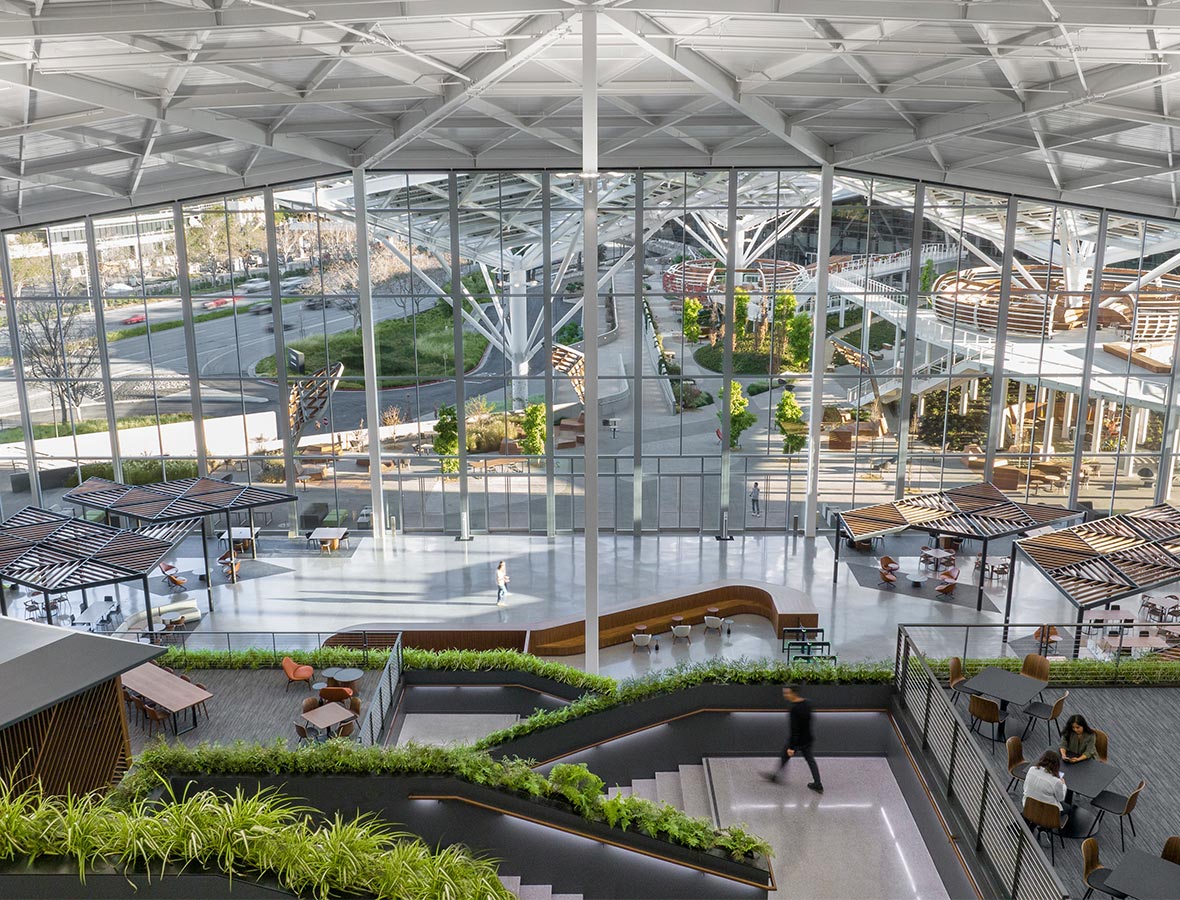
With new hybrid work patterns and flex users, how are transit stations adjusting for different uses or different times?
Jaymes: According to the American Public Transit Association, overall transit ridership is up at about 80% of pre-pandemic levels, but there’s hasn’t been a full recovery. We’ve seen off-peak and weekend transit ridership recovering faster than weekday trips. So, transit agencies are looking at how they can move beyond serving traditional commuters and provide better all-day service supported by new fare structures, different service offerings, and retail inside stations.
Even for the biggest transit agencies, it can challenging to reposition their existing stations and facilities. That’s where transit-oriented development (TOD) comes in. TODs can turn underutilized station parking into a revenue-generating asset that also helps create a built-in ridership base. The other big concern is safety and security. We’re working on station designs that are more secure, open, and better lit to help address those concerns.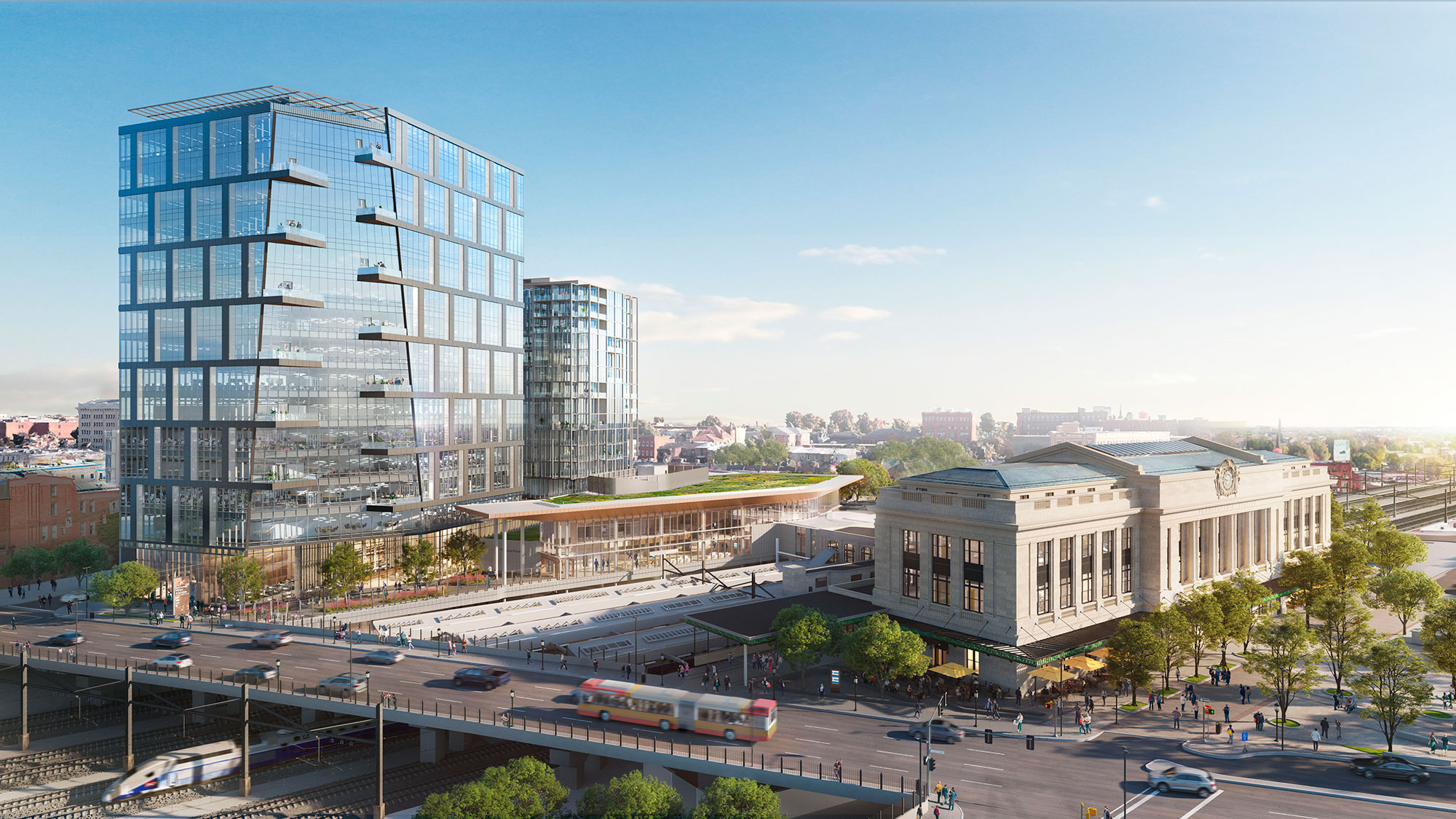
What else is going along with that to improve the transit experience?
Jaymes: Our transit experience research identified five factors that really drive experience. Safety was number one, then cleanliness. We’re working with transit agencies like LA Metro to redesign stations to enhance passenger safety and comfort. People really value the free time they have on transit where they’re not driving, and they can focus on something else, connecting digitally, working, or just accessing media.
Some of the most successful transportation providers are actually in the private sector. Brightline has been hugely successful in Florida and has now broken ground on Brightline West, which is going to connect LA and Las Vegas. They’re providing a high-quality experience from the time you get to the station to the amenities and service on board, so that even if the time is comparable to driving or flying, it’s a much better experience. And they’re having a ton of success with that model, and they’re delivering it much faster than other high-speed rail efforts. Additionally, the federal government has investments that are coming from the Infrastructure Investment and Jobs Act, and that’s a big growth sector over the next 10 years.
Carmen: Right now, transit agencies are really focusing on operations. We are rethinking what people do at stations, and part of that translates to design solutions, but it’s also part of the conversations we’re having with transit agencies.
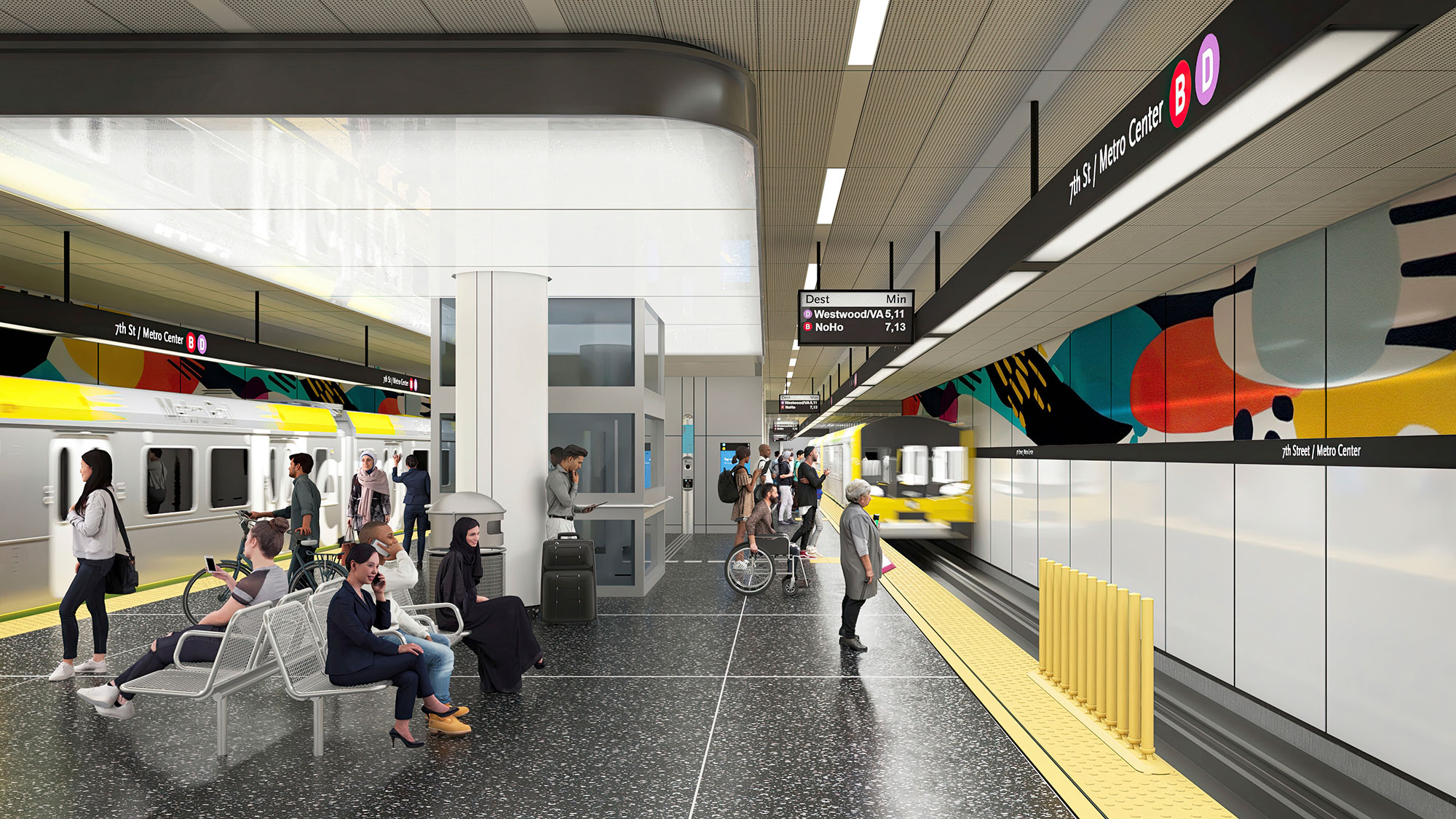
What will the next generation gas or charging station look like?
Dylan: The more established groups are trying to roll out EV charging stations at scale that are funded by either large energy companies or car companies. Nobody really knows what the ultimate business model is, but they’re all very anxious to get EV chargers out there. What happens if there are 200 or 300 people charging their cars, and it creates this instant community. What are they doing for 30 minutes? Is it subscription based? Is it like the airline club model? There’s a lot of potential, but it is a challenge. The people who live in multifamily apartments, who can’t add the electric infrastructure into their houses, or who have longer daily commutes, they’re concerned about charging. So, we’re looking at this through our research and our partnerships.
Alex: As our electrical grid ages, more people are starting to add battery packs, essentially, to their houses or to their apartment buildings, so that they can draw on that energy that they’re storing at low peak times to offset demands on the grid. EVs have started to use vehicle-to-load (V2L) technology, where your EV can essentially act as a large battery for your house. So instead of just charging your EV, this self-sustaining micro circuit takes pressure off of our infrastructure.
How are cities planning for infrastructure for e-bikes, scooters, and other forms of micromobility?
Carmen: There’s still a focus to connect transit infrastructure to make e-bikes and scooters available. I don’t know if the shared model is where we’re headed towards, but you can tell now that they’re all privately owned.
Jaymes: As the cost of e-bikes comes down and accessibility goes up, cities are rushing to catch up. This includes rethinking city streets to better accommodate all modes of mobility. I think we’re going to see more privately owned, small-scale electric mobility, and we need more infrastructure to serve that.
What is Gensler doing to help clients prepare for the development of high-speed rail in the U.S., and other mobility investments?
Carmen: The planning of high-speed rail has become more important than ever and so has finding the right station areas around these locations. We’re also seeing a hospitality or retail approach to designing high-speed rail stations.
Jaymes: A high-speed rail station can really transform the economics of an area. You’ll see new types of businesses and services clustering there and new development opportunities. Some of our clients are looking at how they can position around these spaces and capture that value to create new types of communities.
Here in Los Angeles, the 2028 Los Angeles Olympics is a catalyzing event for our region. It’s not just major infrastructure. A lot of the work we’re doing now, and in the next four years, is focused on more tactical, quick build solutions that will still deliver that legacy — whether it’s active transportation infrastructure, station upgrades, mobility hubs, or other things that can be deployed quickly but can also be a model for other cities.
For media inquiries, email .
